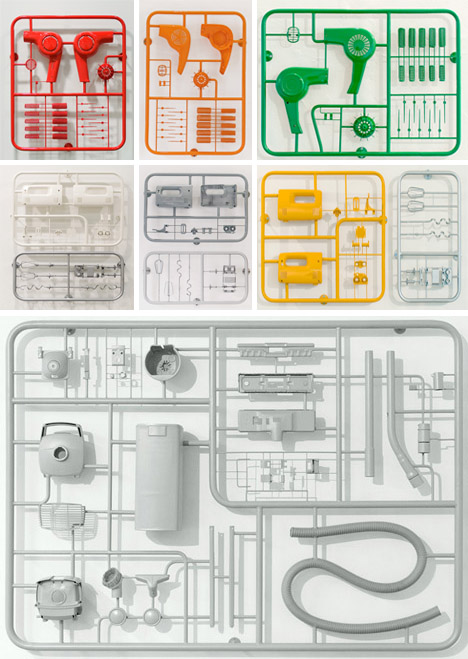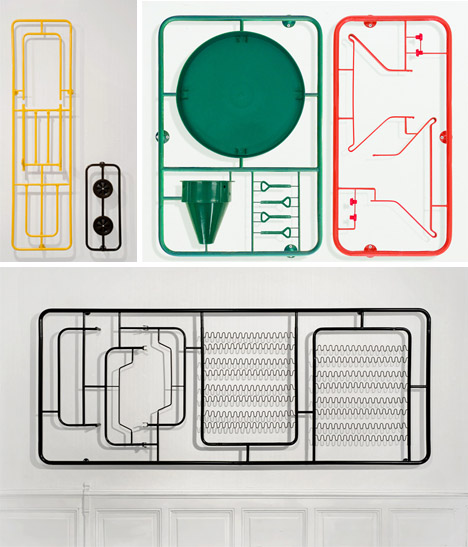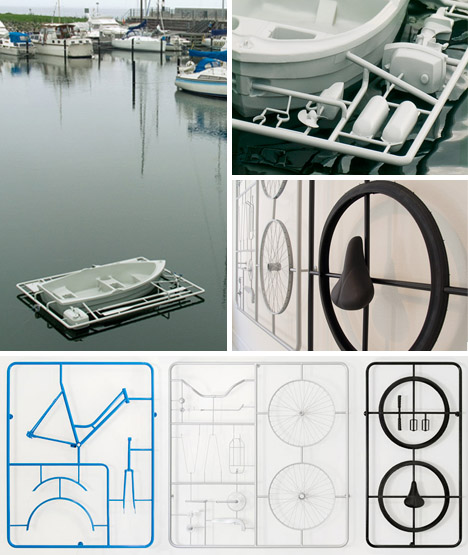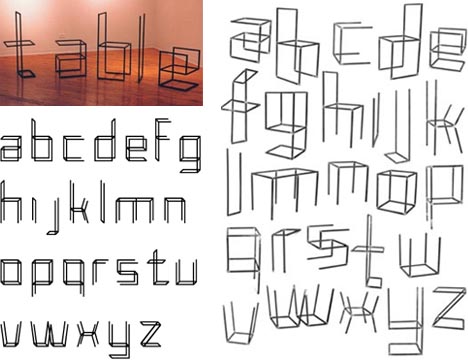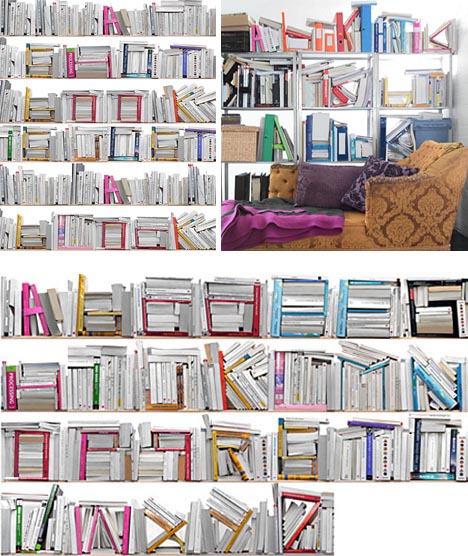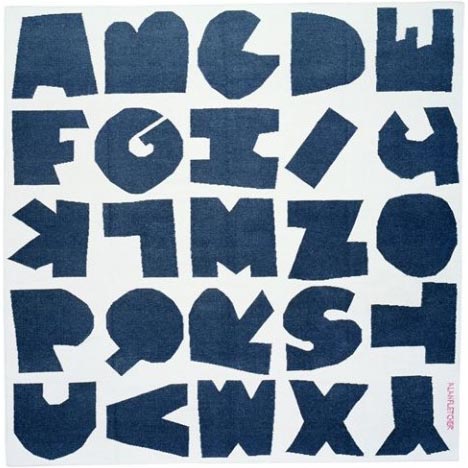Remember those tiny toys and miniature models that required you to ‘punch out’ little pieces and put them together? These are like that – but huge beyond belief, letting you make your own … well, just about anything. Warning: batteries not included – and objects in these photos may be much much larger than they appear.
Some assembly required’ takes on an entirely new meaning with these extra-large punch-outs. Unfortunately, though, like their smaller counterparts these are made for display only. While the boat does actually (somewhat amazingly) float, the full-scale cars, scooters, bikes, engines and other household objects both large and small do not actually function like their real-life equivalents.
Some have been hung like works of high art on bare white walls. Others appear temporarily in public spaces and relate to a larger built environment, like the boat floating on the water or the scooter also pictured above. This latter project, for example, is not only situated in an apt structure (an indoor parking lot) but it also draws on the color palette of the painted columns, floors and walls around it.
Still, there is something sublime about seeing artist Michael Johannson transform even-more-ordinary everyday objects into a world of strange and surreal (but still somehow life-like) ‘toy model’ versions of themselves. His subjects range from large vehicles and mid-sized push-carts, Christmas-tree stands and beds all the way down to hair dryers, blenders and other small home appliances.
That daily familiarity – like pieces and parts of our own bodies – combined with our childhood associations with do-it-yourself model kits makes you want to reach out and make these things come alive by punching them out and putting them together. In the end, they are simply metal sculptures … unless we have the imagination to make them become much much more.








